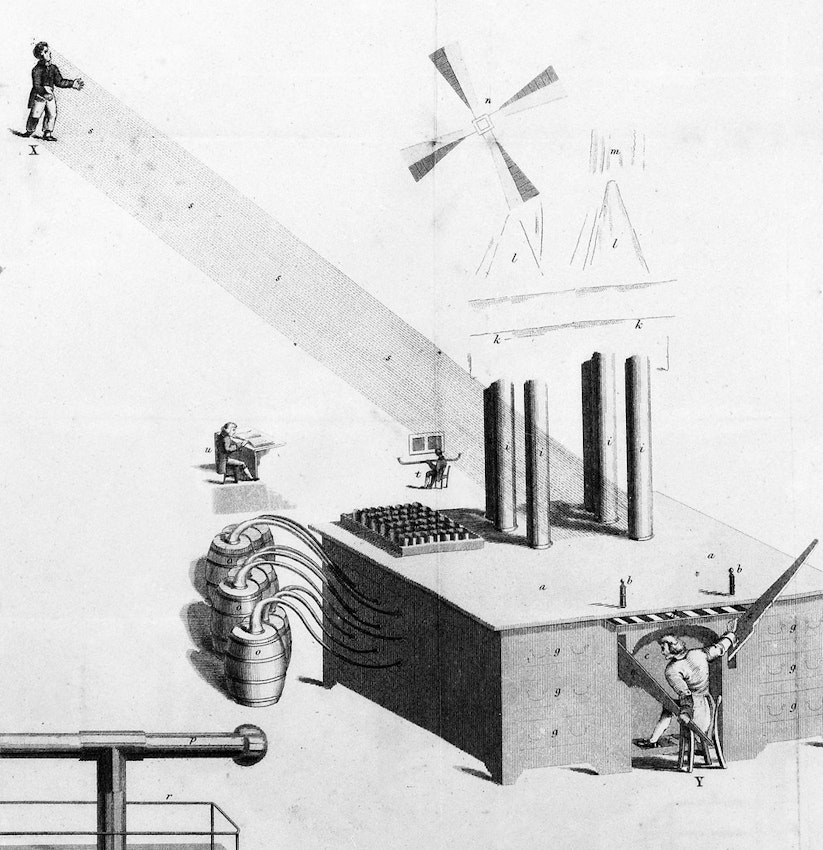When I visited Edinburgh in the spring, friends of mine gave me a book that had jumped out at me from one of their shelves: The Air Loom Gang by Mike Jay. Was “Air Loom” a made-up word, or, if not, what could it possibly stand for?, I wondered. The book is based on the true story of James Tilly Matthews, who believed that a gang of architects of evil had invented a machine to control the minds of politicians and army generals in order to brainwash them into starting a war. The Air Loom, Matthews was convinced, was a machine that “weaves ‘airs’ or gases into a ‘warp of magnetic fluid'” to influence people’s minds and bodies, tormenting them if they resisted.
The year is 1796 and the war in question is between England and France but the gist of the story is eerily contemporary. Anti-war activist James Tilly Matthews was a paradigmatic conspiracy theorist before the term had been established. Daring to proclaim his theories about the Air Loom Gang in public, he was declared insane and imprisoned in London’s notorious Bedlam lunatic asylum. He remained incarcerated for the rest of his life.
“As he stared down at Lord Liverpool, the man felt a new rhythm to his own breathing. The bellows were taking control of his chest, like an incoming tide. He had lost concentration; the rays had found him. The air inside his lungs was reaching into his vitals, moulding itself into spectral fingers, twisting his guts into spasm. Liverpool continued, untroubled by the machine’s attention, for he was already doing its bidding. It was clear from the King’s Message, he insisted, that the French, „far from desiring peace, were determined that the negotiations should never arrive at that stage…“
A flash of panic brought the man in the gallery to his senses. There was a babble of ghostly voices audible now inside his own head, a distant hubbub, but soon one of the voices would be selected to become the commanding force which had held Pitt in its thrall. This was the moment at which, in the full force of the Air Loom’s rays, he could see reflected dimly in his head the dripping walls of the cellar, the machine itself, and the gang of seven who controlled it. Into focus came the sharp, pock-marked face of the operator, whom he knew only as the Glove Woman. Behind her, inspecting her work, loomed the gang’s leader, Bill the King. His attendance was a sign that this was an important operation. (…) Behind the Air Loom, as ever, sat Jack the Schoolmaster, a sly smile on his face, taking detailed notes with one hand and pushing his wig back from his forehead with the other. The rest of the gang were lost in the shadows, but he could hear Sir Archy’s coarse guffaws, and The Middle Man muttering his mantra: „Yes, he is the talisman.“
As the man’s breath rose and fell in sympathy with the machine, he realized that these were the last few moments that his voice would be his own. He knew from experience that, once he could see the gang, they had him trapped in their sights. He was ensnared, past any hope of escape. A rasping intake of breath, a grimace, a spasm, then a single word exploded from the gallery.
„TREASON!“”
For more information & illustrations of the Air Loom check out the stunning article about the book by Mike Jay on The Public Domain Review.

